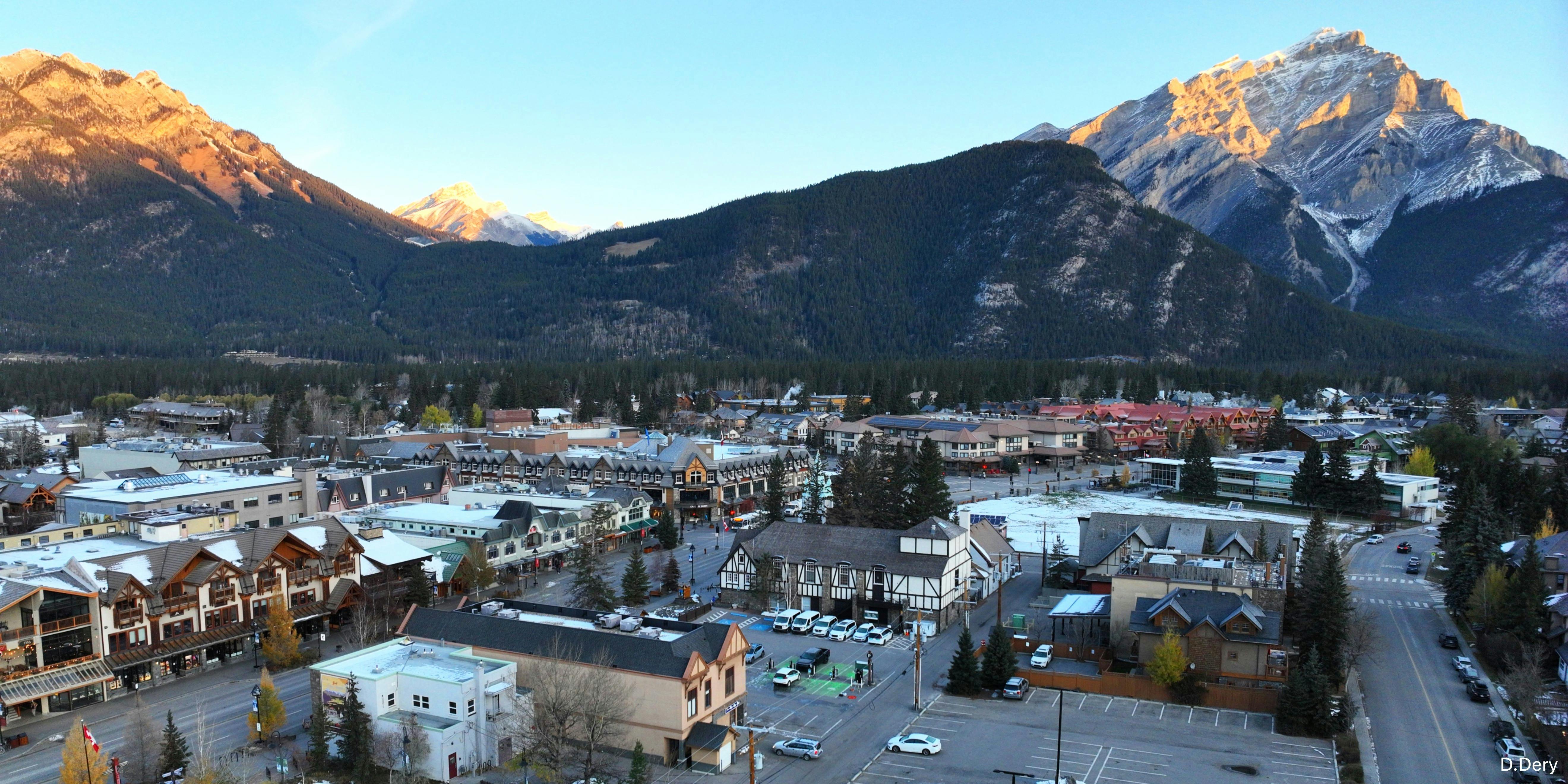FAQs
- modernize facilities and open spaces in downtown Banff to welcome national park visitors,
- encourage connection with the national park,
- foster a welcoming and vibrant community, and
- look at options to address housing needs for eligible residents.
- The Art Gallery of Alberta
- The Missing Middle, City of Edmonton
- The National Music Centre, City of Calgary
- The Winnipeg Art Gallery
- Block 2 of Canada’s Parliament
- Sending your thoughts via email to Opinion@pc.gc.ca or via regular mail to Office of the Superintendent, Box 900, Banff, Alberta T1L 1K2
- Requesting a telephone or video conference meeting with a project team member (submit your request to Opinion@pc.gc.ca).
What is the project about?
Parks Canada is advancing work on an idea first envisioned almost 25 years ago to develop facilities in downtown Banff (on the 200-block of Banff Avenue) to support visitor reception, enjoyment and connection with the rest of the park, and to foster understanding of the challenges faced by protected areas like Banff. By building connections to Banff National Park, we can foster the stewards of tomorrow — people who know and care about protected places. Ultimately, this is an investment in the future of Banff National Park.
What were the key themes shared with Parks Canada during the first phase of engagement?
In 2022, Parks Canada received initial funding to proceed with detailed site studies of the 200-block of Banff Avenue and initiate engagement with Indigenous communities, stakeholders and the public on the vision for redevelopment.
It is clear this project is important to many as Parks Canada has received numerous comments online, through meetings with stakeholders and Indigenous groups, and as well as from community members.
Parks Canada heard clearly that the redevelopment of the 200-block of Banff Avenue presents a unique opportunity to:
The feedback received through engagement is being used to guide the design competition, as all applicants will need to ensure that the values and vision shared by Indigenous communities, stakeholders, and the public, are reflected in the conceptual design options that are developed.
What is a design competition and what is RAIC’s role?
Our goal is to transform the 200-block of Banff Avenue into an innovative and welcoming space that will meet the needs of the community along with those of the over 4 million visitors who come to Banff National Park every year.
Through an architectural design competition, teams of architects and specialized consultant firms will be invited to submit conceptual design proposals for the site that will complement the objectives of the site and feedback received from the public through the engagement phase. An independent and professional jury will recommend a winning design and team to Parks Canada. As an RAIC-endorsed competition, designated professional advisors are overseeing the overall competition process.
Why proceed with a design competition?
This is a unique, once in a generation opportunity to redevelop 10 contiguous lots in downtown Banff into a vibrant public space that provides a true-to-place experience for visitors which inspires exploration, builds stewardship, and encourages connection.
Given the scope and legacy of this project, Parks Canada has contracted the Royal Architectural Institute of Canada (RAIC) to oversee an International Design Competition. The competition will follow established standards and protocols and bring professional expertise to the evaluation process to generate conceptual designs for the site.
Architectural design competitions support variety and are among the most effective ways to achieve excellence in building design and architecture. They are often used to generate innovative new ideas. Notable recent design competitions in Canada include:
When will the design competition launch?
Parks Canada and the RAIC are planning to launch the design competition in Spring 2025.
When will there be a new building on the ground? What will it look like?
It’s too soon to say. Now that the initial scoping phase and public and Indigenous engagement have taken place, we are now working with the RAIC to plan for the launch of an International Design Competition to develop conceptual design options for consideration.
How much will the project cost?
The costs of redeveloping the site are not known at this point, as there is not yet a final design. This part of the project is limited to planning, engagement and creation of redevelopment options.
How can I learn more and get involved?
Ensuring the views and values of Canadians are reflected in park management and decision-making is a priority for Parks Canada. As work advances on an idea first envisioned almost 25 years ago, there will be continued opportunity for people to provide input and share their perspectives.
You can get involved by:
